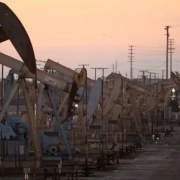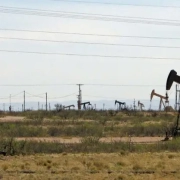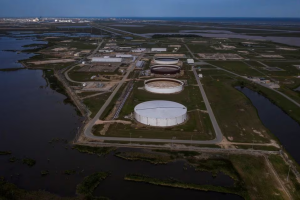The world’s fossil-fuel producers are on track to nearly quadruple oil and gas production from newly approved projects by the end of this decade, with the US leading the way in a surge of activity that threatens to blow apart agreed climate goals, a new report has found.
There can be no new oil and gas infrastructure if the planet is to avoid careering past 1.5C (2.7F) of global heating, above pre-industrial times, the International Energy Agency (IEA) has previously stated. Breaching this warming threshold, agreed to by governments in the Paris climate agreement, will see ever worsening effects such as heatwaves, floods, drought and more, scientists have warned.
But since the IEA’s declaration in 2021, countries and major fossil fuel companies have forged ahead with a glut of new oil and gas activity. At least 20bn barrels of oil equivalent of new oil and gas has been discovered for future drilling since this point, according to the new report by Global Energy Monitor, a San Francisco-based NGO.
Last year, at least 20 oil and gas fields were readied and approved for extraction following discovery, sanctioning the removal of 8bn barrels of oil equivalent. By the end of this decade, the report found, the fossil-fuel industry aims to sanction nearly four times this amount – 31bn barrels of oil equivalent – across 64 additional new oil and gas fields.
Click here to read the full article
Source: Bulletin of the Atomic Scientists
—
If you have any questions or thoughts about the Quadruple Oil and Gas Production topic, feel free to contact us here or leave a comment below.











